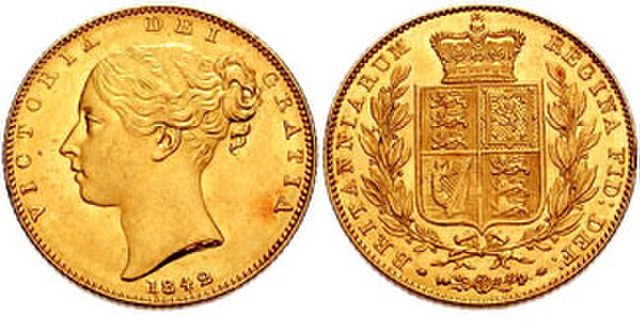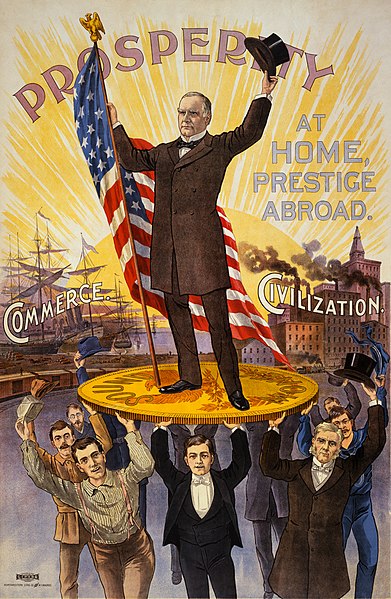Silver certificate (United States)
Silver certificates are a type of representative money issued between 1878 and 1964 in the United States as part of its circulation of paper currency. They were produced in response to silver agitation by citizens who were angered by the Fourth Coinage Act, which had effectively placed the United States on a gold standard. The certificates were initially redeemable for their face value of silver dollar coins and later in raw silver bullion. Since 1968 they have been redeemable only in Federal Reserve Notes and are thus obsolete, but still valid legal tender at their face value and thus are still an accepted form of currency.
The $1 silver certificate from the Hawaii overprint series.
$5 Series 1899 silver certificate depicting Running Antelope of the Húŋkpapȟa.
Educational Series one-dollar silver certificate (1896). National Numismatic Collection
Image: US $1 SC 1886 Fr 217
A gold standard is a monetary system in which the standard economic unit of account is based on a fixed quantity of gold. The gold standard was the basis for the international monetary system from the 1870s to the early 1920s, and from the late 1920s to 1932 as well as from 1944 until 1971 when the United States unilaterally terminated convertibility of the US dollar to gold, effectively ending the Bretton Woods system. Many states nonetheless hold substantial gold reserves.
Gold certificates were used as paper currency in the United States from 1882 to 1933. These certificates were freely convertible into gold coins.
The British gold sovereign or £1 coin was the preeminent circulating gold coin during the classical gold standard period.
Huge quantities of $20 double eagles were minted as a result of the California gold rush.
William McKinley ran for president on the basis of the gold standard.








